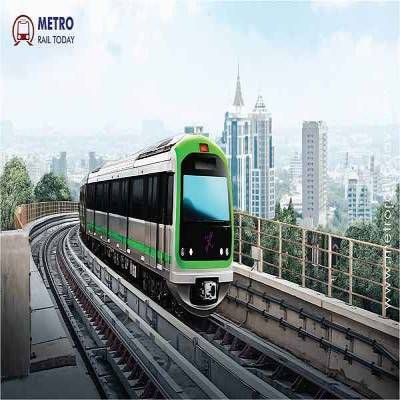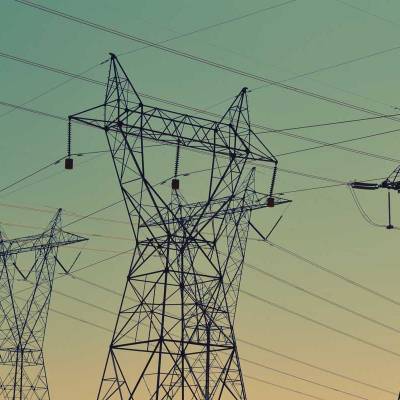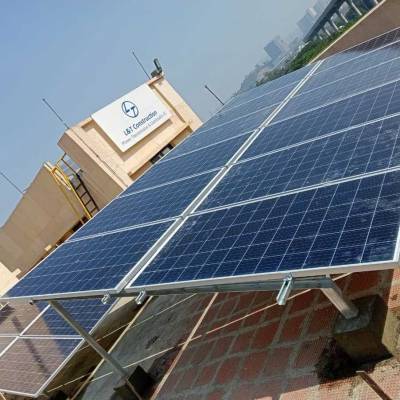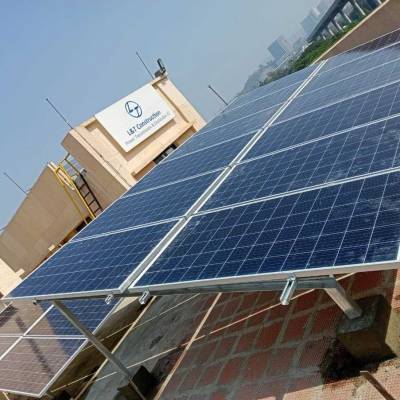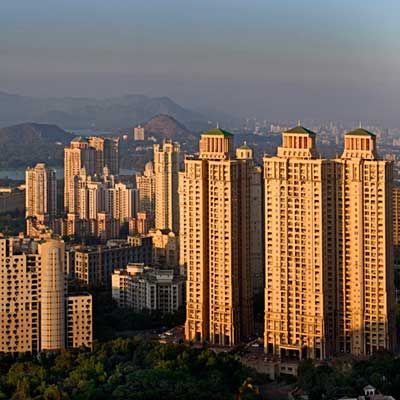- Home
- Real Estate
- Building green: Trends in building blocks, glazing, insulation, HVAC, elevators, lighting, and BMS

Building green: Trends in building blocks, glazing, insulation, HVAC, elevators, lighting, and BMS
- IGBC
- LEED
- Egis India Consulting Engineers
- GRIHA
- Srinivas S
- LED lighting
- Waterless urinals
- HVAC technologies
- photovoltaic cells
- TERI
- Monnanda Appaiah
- Wienerberger India
- Rajiv Balaggan
- Pilkington Glass India
- Façade
- Eclipse Advantage Bluegreen Glass
- Vikram Khanna
- PUF
- ECBC
- Roy Chowdhury
- Building blocks
- AAC
- Mivan technology
- Tuffblocks AAC
- Mehernosh Pooniwala
- Excel Coatings
- G
In 2001, India had just one building conforming to the Indian Green Building Council (IGBC) green building rating, spanning 20,000 sq ft. Today, the country has 4,452 IGBC-registered green projects spanning 4.79 billion sq ft! <br /> <br /> In 2007, the Griha Council defined norms for green buildings, further spurring the green building movement, especially as municipalities in cities like Noida, Gurugram, Mumbai and Chandigarh allow builders to build additional 5 per cent floor-area ratio for Leadership in Energy and Environmental Design (LEED) Gold and Griha 4-Star certifications, observes <span style="font-weight: bold;">Vijay Mattoo, Senior Consultant MEP, Egis India Consulting Engineers.</span> 'Also it has been made mandatory for new government buildings to go for minimum 3-Star Griha ratings.'<br /> <br /> Consequently, the past five years have seen great growth in the availability of green building materials for GRIHA and IGBC-certified structures.<br /> <br /> <span style="font-weight: bold;">Srinivas S, Deputy Executive Director, IGBC, and Accredited Professional, Confederation of Indian Industry (CII),</span> mentions the various materials and technologies that have gained traction because of the green building movement: Fly-ash blocks, fly-ash cement, insulation materials like extruded polystyrene and glass wool, cool roof materials, paver blocks, roof garden trays, high-performance glazing, solar photovoltaic, light emitting diodes (LED) lighting, waterless urinals, bagasse-based furniture, efficient HVAC technologies, recycled roofing materials, recycled tiles, low-volatile organic compound paints and CO2 sensors. While most of these materials are being made in India, a few technologies like photovoltaic cells, building management systems, magnetic levitation chillers and screw chillers with a capacity of over 200 TR and CO2 sensors are being imported, according to Srinivas.<br /> <br /> In future, affordable housing promises to create opportunities for sustainable building materials and technologies, observes <span style="font-weight: bold;">Sanjay Seth, Senior Fellow & Senior Director, Sustainable Habitat Division,</span> The Energy and Resources Institute (TERI), and CEO, GRIHA Council. Recently, the Building Materials and Technology Promotion Council released the second edition of its 'Compendium of Prospective Emerging Technologies for Mass Housing' containing details of 16 emerging technologies.<br /> <br /> <span style="font-weight: bold;">Building blocks</span><br /> 'Most projects registered under the GRIHA rating system have been built using fly-ash bricks, autoclaved aerated concrete (AAC) blocks, Fal-G blocks, hollow concrete blocks and, recently, Mivan technology,' says Seth. 'Post-tensioned slabs, which decrease the energy embodied in the structure, are also popular.'<br /> <br /> AAC blocks with less than half the U-value of clay bricks, 0.67 W per sq m per deg K versus 1.95 W per sq m per deg K, can help conserve 5-8 per cent of the energy consumption in a building, says Srinivas.<br /> <br /> Godrej Construction's AAC block, known as Tuffblocks AAC, helps to keep interiors far cooler than conventional bricks due to its better thermal conductivity properties. Additionally, the average AAC block is eight times the size of a brick, thus cutting down the number of joints. Also, as one block has one third the density of a conventional brick, <span style="font-weight: bold;">Mehernosh Pooniwala, Head, Construction Materials, Godrej Construction</span>, estimates the consumption of steel could be reduced by 10-12 per cent in high-rise buildings by using Tuffblocks AAC instead of bricks. <br /> <br /> Tuffblocks AAC has been used in the construction of Godrej Platinum project in Vikhroli East, Mumbai, an IGBC Platinum-rated building and many other projects across Mumbai, Pooniwala shares.<br /> <br /> A green alternative to regular clay bricks is certified clay building materials such as Porotherm Smart Bricks and Thermobrick, IGBC and GRIHA-certified products by Wienerberger India. <br /> <br /> According to<span style="font-weight: bold;"> Monnanda Appaiah, Managing Director, Wienerberger India</span>, 'Porotherm's green rating is an outcome of its U-value; it is 45 per cent better than conventional walling material as thermal insulation and it recycles locally available materials like coal ash, rice husk and saw dust (with clay sourced from de-silting of dead water tanks). Savings from using the bricks are especially large in high-rise construction.' <br /> <br /> Wienerberger's products have been used in green-certified buildings such as the Puma Showroom in Indira Nagar, 100 Feet Road, Bengaluru, a Platinum-rated outlet, Geojit Paribas' corporate office in Cochin, a Gold-rated IGBC project, and a faculty accommodation building at the Indian School of Business, Hyderabad, a Gold-rated project.<br /> <br /> <span style="font-weight: bold;">Green glazing</span><br /> Glazing is aesthetically appealing, structurally strong, and facilitates the transmission of daylight and heat. Green buildings make use of high-performance glazing to reduce heat gain and the energy load. With plenty of glazing products available, the choice of product depends on building design and orientation, climate, and the extent to which the developer aims to go green, as this defines the technical specification (and performance), notes <span style="font-weight: bold;">Rajiv Balaggan, Sales Head, Architectural Glass India, Pilkington Glass India.</span><br /> <br /> Double glazing has roughly half the solar heat gain coefficient of single glazing, 0.3 versus 0.67. <br /> <br /> This makes double glazing over three times more efficient an insulation material, with the additional ability to get natural light into the building, says Srinivas.<br /> <br /> Typically, residential buildings, which use less glass in their façade and include shading devices like covered balconies, can make do with single glazing, while commercial green buildings with glass façades sans shading need double glazing, observes Balaggan.<br /> <br /> Heavy window shades allow the use of clearer glass (as opposed to darker tint glass), which, in turn, allows more light into the interiors, points out <span style="font-weight: bold;">Anumita Roy Chowdhury, Executive Director for Research and Advocacy, Centre for Science and Environment (CSE).</span> 'At our new campus, the Anil Agarwal Environment Training Institute near Alwar, we used double glazing with a U-value of 2.8 W per sq m K and glass with a visual light transmittance of 81, to ensure quality daylight with minimal heat gain.'<br /> <br /> Mahindra Lifespaces' Splendour, in Mumbai, a Gold-rated building, uses Pilkington's Eclipse Advantage Evergreen Glass in single glaze, whereas Time Square, Mumbai, another Gold-rated building, uses the Eclipse Advantage Bluegreen Glass in double glaze. Tata Housing Raisiana Residency, in Gurgaon, which has a warmer climate, uses the Solar E Neutral Glass, a notch up from the Eclipse Advantage in performance, for a similar Gold-rating. <br /> <br /> These high-performance glazings have helped green buildings save 20-25 per cent of energy consumption, says Balaggan.<br /> <br /> At the ITC Green Centre, Bengaluru, a LEED Platinum pre-certified building, Asahi India Glass's (AIS) energy-efficient glass AIS Ecosense helps reduce total energy consumption by 8-10 per cent, notes <span style="font-weight: bold;">Vikram Khanna, COO, Consumer Glass, COO</span>, Architectural Institutional Business, and CMO, CIO, Asahi India Glass. To help decision-makers select the right glass and other energy-consuming products to reduce HVAC load and, thus, energy consumed, AIS offers a 4G solution to conduct simulation studies, which has been used by the ITC Green Centre, Bengaluru, and Hexaware, Chennai.<br /> <br /> <span style="font-weight: bold;">Efficient insulation </span><br /> Introducing a two inch layer of extruded polystyrene (XPS) foam or polyurethane foam (PUF) can reduce the U-value of a roof, from 3.50 W per sq m per deg K to 0.33 W per sq m per deg K, observes Srinivas. This, in turn, can reduce the energy load of a building by 5-6 per cent. <br /> <br /> Adding 75 mm XPS insulation to a brick wall saves 3-8 per cent of the energy load.<br /> 'Insulation can reduce the building's energy demand by over 20 per cent compared to a conventional building,' says Roy Chowdhury.<br /> <br /> At the CSE's new campus, sandwiching 50-mm XPS insulation between a 200-mm AAC block wall and a 100-mm AAC block wall helped achieve a U-value of 0.30 W per sq m per K, considerably lower than the 0.44 W per sq m per K standard prescribed by the Energy Conservation Building Code (ECBC), notes Roy Chowdhury. <br /> <br /> On the roof, a 100-mm-thick RCC layer is covered by a 100-mm XPS layer, on top of which a layer of broken white and recycled 13-mm thick ceramic tiles helps reflect heat. This CSE campus is one of the 24 model energy-efficient buildings in the country selected by the Global Environmental Facility, BEE and UNDP-India to be monitored for their energy performance.<br /> <br /> Another product, EPDM rubber insulation, costs more than conventional Nitrile rubber insulation but works well to protect exposed insulated pipes and ducts installed on the roof from UV radiation, adds Mattoo.<br /> <br /> Interestingly, insulation can double up for a design purpose. <br /> At the Viviana Mall, Thane, an IGBC Silver-rated structure, Modifoam fill with insulation properties, a hybrid variant of polystyrene, was used as a lightweight filling to create a sloping roof and, in the process, reduce energy load, says <span style="font-weight: bold;">Vishal Modi, CEO, Modifoam</span>. Modifoam fill, which can also be used to achieve a desired height, comes in various thicknesses. 'Whereas extruded polystyrene is typically available in a thickness of up to 75-100 mm, we manufacture Modifoam fill in any thickness; we provided a 300-mm-thick filling solution to Viviana Mall,' he adds.<br /> <br /> Insulation can be equally effective in a thin layer. Excel Coatings' Excel insulx thin film insulation coating with aerospace-based insulation technology can eliminate the need for 1-2-inch-thick insulation while saving up to 30 per cent of energy needs, according to <span style="font-weight: bold;">Vidhyaprakash MR, Director, Excel Coatings.</span> Also, Excel CoolCoat heat-reflective coating from Excel Coatings has been in the market since long and has similar energy-saving capability to thin film insulation coating. It has been used at Embassy Manyata Business Park, a Platinum-rated structure, and at Mahindra World City, Chennai, a Gold-rated integrated township.<br /> <br /> <span style="font-weight: bold;">Super-cool HVAC</span><br /> Better envelope design coupled with technologies has stretched the cooling ability of 1 tonne of air-conditioning to 750 sq ft from 150 sq ft about 15 years ago, observes Srinivas.<br /> <br /> <span style="font-weight: bold;">Which technologies are these?</span><br /> Chillers featuring magnetic bearings are a step up in HVAC technology; these are on an average 10-15 per cent more efficient than conventional centrifugal chillers, notes Mattoo. However, these chillers cost nearly 50 per cent more than conventional ones; this extra investment pays off in two to four years depending on usage.<br /> <br /> Srinivas lists wind towers, geothermal cooling, district cooling, radiant cooling and magnetic levitation chiller systems as new HVAC technologies finding acceptance in India. <br /> <br /> The IGBC Gold-rated CII Institute of Quality Building in Bengaluru effectively uses wind towers for cooling. The Indian School of Business, Mohali, an IGBC Gold-rated building, has installed 300 TR geothermal cooling, resulting in annual energy savings of 180,000 kWh. Geothermal technology can result in energy savings to the tune of 30-50 per cent.<br /> <br /> Gujarat International Finance Tec (GIFT) City, Gandhinagar, an IGBC Gold-rated business district, proposed to adopt district cooling for the 62 million sq ft of built-up area, involving installation of 180,000 TR in a staggered manner. So far, 10,000 TR has been installed. At Infosys, Pocharam, an IGBC Platinum-rated facility, a radiant cooling system has been installed with a coefficient of performance of 8.1, helping to save 30-40 per cent energy. <br /> <br /> 'VRF systems have become a norm with district cooling and radiant slab cooling systems being used more to ensure lower energy consumption,' notes Seth. 'Air filters and CO2 monitoring have started to make their presence known.' <br /> <br /> In choosing an HVAC system, consider outdoor weather conditions, suggests Roy Chowdhury. 'As the hot and dry season is the predominant weather in Rajasthan, for our new campus, we chose an improvised version of the classic desert cooler, a three-stage evaporative cooling system with heat pump chiller, with roughly half of the energy load of the next best system.'<br /> <br /> At the NASSCOM corporate headquarters in Noida, an IGBC Gold-rated building, Zamil Air Conditioners India proposed VFD-operated, water-cooled screw chilling units with a high COP using an environment-friendly refrigerant (R-134a).<br /> <br /> 'Additionally, we provided variable speed drives for all the air-handling units and secondary chilled water pumps that operate at varying loads and high-efficiency electric motors (IE-3) for all the equipment,' explains <span style="font-weight: bold;">Hemant Bhange, Managing Director, Zamil Air Conditioners India.</span> All the fresh air supply units were provided with heat recovery wheels. <br /> <br /> <span style="font-weight: bold;">Godrej NXW Green Inverter </span><br /> ACs uses R290, the world's greenest refrigerant with zero ozone depletion potential and minimal global warming potential. <br /> <br /> Godrej Appliances has recently received a Rs 207-crore project from Energy Efficiency Services (EESL) to replace old ACs in government and railway offices across the country with 52,000 Godrej NXW green inverter ACs with 5.25 ISEER. Replacing the current old air-conditioners in government buildings with super-efficient appliances will reduce power consumption by 30 per cent, according to <span style="font-weight: bold;">Saurabh Kumar, Managing Director, Energy Efficiency Services.</span><br /> <br /> Godrej is forging ahead with AC technology. 'Our new NXW AC, which is India's most power-saving green inverter AC with an ISEER rating of 6.15, complies with the 5-star requirements of the BEE energy table proposed to be released in 2019, and consumes 25 per cent less energy than a regular 5-star inverter AC,' says <span style="font-weight: bold;">Anup Bhargava, Product Group Head-Air Conditioners, Godrej Appliances.<br /> <br /> Green elevators </span><br /> Based on the technology available today, what is an energy-efficient elevator?<br /> Permanent magnet synchronous gearless traction machines consume up to 50 per cent less energy than conventional geared machines, observes <span style="font-weight: bold;">Bharat Vishnani, Managing Director, ThyssenKrupp Elevator (India).</span> 'Also, regenerative drives help cut the energy consumption of high-speed, high-rise elevators by up to half by feeding energy back into the building's power grid during the elevator motor's generative mode when a lightly loaded car moves up or a heavily loaded car moves down.'<br /> <br /> Regenerative lifts are emerging as an energy-efficient technology, agrees Seth.<br /> An energy-efficient ThyssenKrupp elevator is installed in Mindspace Building No.1 in Navi Mumbai, an IGBC Gold-rated building.<br /> <br /> <span style="font-weight: bold;">Kohinoor Square, Mumbai, a LEED Gold-rated building,</span> employs Otis' Gen2 elevators, featuring a coated steel belt, the ReGen drive, the permanent magnet machine and the Otis' PULSE system, to reduce energy consumption up to 75 per cent under normal operation compared to traditional elevators with non-regenerative drives. Additionally, Otis offers the Gen2 Switch, a battery pack that continues to operate the elevator in the event of a power failure. Sebi Joseph, President, Otis India, reckons this would support up to 100 trips in an eight-storey building.<br /> Elevator technology in India is continuously being updated.<br /> 'We have recently launched the enta100 elevator, German design adapted for India,' says Vishnani. 'The enta100 is a space-saving product well suited for low-rise residential buildings in the country.'<br /> <br /> <span style="font-weight: bold;">Power lighting</span><br /> The lighting power density of a green building is roughly 40-50 per cent lower than a regular building, 0.5 -0.6 W per sq ft as against 1.0 W per sq ft, says Srinivas. How is this achieved?<br /> LED lights have become the new normal, says Seth.<br /> At the Jaquar Group headquarters in Manesar, combining energy-efficient Jaquar light fixtures like LED and sensors has helped reduce the lighting load of the campus by half compared to a conventional installation, says Mehra.<br /> <br /> A new trend in lighting technology involves pairing Internet-connected lighting with Power over Ethernet (PoE) technology. This involves routing low-voltage electricity and data over the ethernet cables of a smart building's IT network to power LED luminaires fitted with sensors.<br /> <br /> 'Philips Lighting has introduced India to Internet-connected lighting to help buildings save up to 80 per cent of the energy used on lighting compared to conventional solutions, a huge saving considering that lighting is typically responsible for 40 per cent of a building's electricity use,' says Sumit Joshi, Vice Chairman and Managing Director, Philips Lighting India.<br /> <br /> At the Edge Building in Amsterdam, Netherlands, a multi-tenant office building, 750 PoE switches connect nearly 6,500 LED luminaires, 3,000 of these with integrated sensors, to create a 'digital ceiling' spanning the building's 15 floors. Philips Envision lighting management software helps facility managers manage the illuminated space, and enables employees to personalise the lighting and temperature at their workspaces via a smartphone app. The Edge Building received the highest score ever awarded from BREEAM, a design and assessment method for sustainable buildings.<br /> <br /> Philips Lighting products that helped the 40,000 sq ft HSBC Tower in Mexico save 54 per cent of the energy consumption and achieve the LEED Gold-rating, include EFix TBS260 recessed lights, fluorescent tube optics specially designed to provide refreshing, glare-free light, embedded downlights with high-intensity discharge lamps, and LED downlights. <br /> <br /> <span style="font-weight: bold;">Water savers</span><br /> Efficient water fixtures and conservation significantly reduce water consumption. At the CSE's new campus, the saving has been 36 per cent, to 86 lpcd (litres per capita per day) as against the standard 135 lpcd, says Roy Chowdhury. <br /> <br /> In Manesar, at the Jaquar Group headquarters, a Platinum-rated building, low-flow fixtures that help conserve water include flow restrictors to adjust the flow in low and high-pressure conditions to save up to 80 per cent of water and dual flushes for a combination of 3/6 litre of water or 2/4 litre of water, says <span style="font-weight: bold;">Rajesh Mehra, Director and Promoter, Jaquar Group. </span>Additionally, all the water used by the building is recycled and used for irrigation and the cooling tower makeup. Two large water tanks store rainwater, which is treated prior to use.<br /> <br /> Kohler's Steward waterless urinal can save up to 40,000 gallons of water per fixture per year compared to water-based urinals and significantly reduces sewage and maintenance costs.<br /> <br /> Experion Milestone, Gurgaon, a LEED Platinum pre-certified building, and the Flipkart Office (in Embassy Tech Village, a LEED Platinum-rated tech park), Bengaluru, feature Kohler's water-saving products, a range that also includes low-flow faucets, water-conserving showerheads and hand showers.<br /> <br /> Jaquar also offers pressmatic faucets that allow only a fixed quantity (750 ml) of water to flow with every press of its knob and sensor faucets for hand-free convenience with hygiene, air showers with a built-in air mixer to make shower drops lighter but more voluminous to save up to 30 per cent of water without compromising on the showering experience, and showertronics iV6, an electronic thermostatic intelligent mixing system iV6 to adjust the shower mode, temperature and water flow.<br /> <br /> <span style="font-weight: bold;">Managing green buildings</span><br /> Siemens building management solutions help building managers and operators optimise the performance and energy-efficiency of their facilities, says <span style="font-weight: bold;">Devidas Kulkarni, Country Division Lead, Building Technologies, Siemens India.</span><br /> <br /> At Hotel Taj Lands' End in Mumbai, Siemens implemented its Demand Flow solution on their existing chillers seamlessly and without compromising on guest comfort and overall hotel operations. Kulkarni reckons the solution ensured an energy saving of over 15 per cent in the first year and had a payback period of around 20 months. Hotel Taj Lands' End could also benefit from the peak load rebate offered by the regional power utility for meeting energy-efficiency levels, entailing additional savings.<br /> <br /> On an average, Demand Flow improves efficiency by 15-30 per cent and has been implemented across hotels, commercial buildings and automotive plants.<br /> <br /> At Manchester Airport, Delta's IOT-based building management and control platform has seamlessly integrated HVAC and lighting with the flight information system so that lighting points in terminals can be switched on and off based on actual fight movements and traffic, thus helping to save 89 per cent of the energy consumed. <br /> <br /> According to <span style="font-weight: bold;">Rajat Bhambri, Business Head BMS, Building Automation Solutions Business Department, Delta Power Solution India</span>, 'Delta's building management and control platform works on multiprotocols (TCIP/BacNet /ModBus /TP-FT-10 /DALI/KNX /ENOCEANIC /M BUS / WIFI) making it a good choice for lighting fixtures and HVAC system components from a wide variety of suppliers.'<br /> <br /> Another Siemens analytical tool, Navigator, provides cloud-based digital services to monitor and reduce energy consumption.<br /> <br /> Current stats: 4,452 IGBC-registered green projects spanning 4.79 billion sq ft.<br /> Several cities allow builders additional 5% FAR for LEED Gold and Griha 4-star.<br /> What's trending: Fly-ash, extruded polystyrene, cool roof materials, paver blocks, solar PV, LED, efficient HVAC, low-VOC paints, CO2 sensors, etc.<br /> <br /> <span style="font-weight: bold;"> - CHARU BAHRI</span><br /> <br /> Share your views on the Green Building scenario in india at feedback@ConstructionWorld.in<br />


